Author: Jake Huolihan
Many of the most popular beers these days are known for being hazy to the point of opacity, and while opinions seem to have softened about this, certain classic styles are still expected to be clear. While larger commercial breweries often rely on mechanical filtration to achieve this goal, other brewers prefer to use chemical solutions such as gelatin.
Prior to fining with gelatin, it’s commonly recommended to first dissolve the powder or sheet in warm water, which in addition to ensuring more equal distribution in the beer, causes the gelatin to become positively charged. Since many haze causing particulates including yeast and polyphenols are negatively charged, the gelatin attracts them to the point they clump together until they become heavy enough to drop out of solution. It’s been purported that failing to hydrate gelatin renders it less effective at clarifying beer, which one past xBmt supports, though such treatment appears to have minimal if any perceptible impact.
I’m a huge fan of lager styles, which I prefer to be as clear as possible, and I’ve had great success using gelatin for this purpose. While preparing the gelatin solution isn’t necessarily difficult, it does require more effort than simply adding the dry powder directly to the beer. Unable to collect data from blind tasters due to Covid-19, I was inspired to repeat the aforementioned xBmt on a notably paler and less characterful style.
| PURPOSE |
To evaluate the differences between a pale lager fined with dry gelatin and one where the gelatin was first dissolved in water.
| METHODS |
I went with a very simple recipe modeled after a German Helles Exportibier where I used Root Shoot light Munich instead of Pilsner malt, the goal being for any differences to be readily apparent.
Apparition
Recipe Details
| Batch Size | Boil Time | IBU | SRM | Est. OG | Est. FG | ABV |
|---|---|---|---|---|---|---|
| 5.2 gal | 30 min | 28.7 | 5.4 SRM | 1.052 | 1.017 | 4.59 % |
| Actuals | 1.052 | 1.017 | 4.59 % | |||
Fermentables
| Name | Amount | % |
|---|---|---|
| Root Shoot Light Munich #256 | 11.5 lbs | 100 |
Hops
| Name | Amount | Time | Use | Form | Alpha % |
|---|---|---|---|---|---|
| Loral | 18 g | 30 min | Boil | Pellet | 11.5 |
| Hallertauer Mittelfrueh | 30 g | 15 min | Boil | Pellet | 4 |
Yeast
| Name | Lab | Attenuation | Temperature |
|---|---|---|---|
| Harvest (L17) | Imperial Yeast | 72% | 32°F - 32°F |
Notes
| Water Profile: Ca 61 | Mg 0 | Na 8 | SO4 75 | Cl 55 |
Download
| Download this recipe's BeerXML file |
I started my brew day by collecting RO water, adjusting it to my desired profile, then flipping the switch on my controller to get it heating up, after which I weighed out and milled the grain.
With the water properly heated, I mashed in then checked to ensure it was at my target temperature.
I let the mash rest for 60 minutes, returning every 15 minutes to give it a brief stir.
While waiting on the mash to finish, I prepared the kettle hop additions.
Once the mash step was complete, I collected the sweet wort in my kettle.
The wort was then boiled it for 30 minutes with hops added as stated in the recipe.
When the boil was finished, I quickly chilled the wort with my IC.
A refractometer reading showed the wort was right at my intended OG.
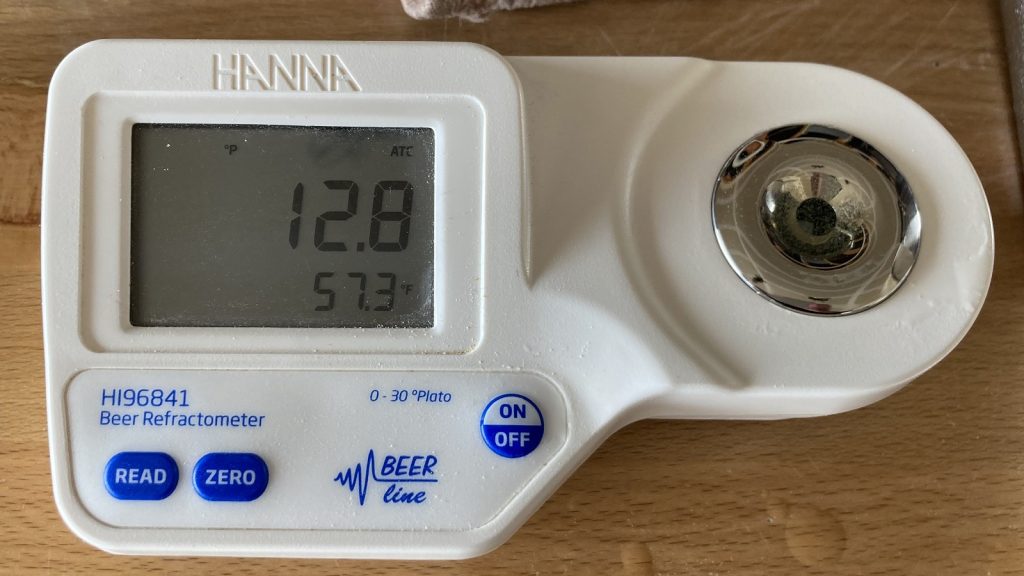
The chilled wort was then evenly split between two fermentation vessels.
Next, I used my glycol unit to finish chilling the worts to my desired fermentation temperature of 50°F/10°C before pitching a single pouch of Imperial Yeast L17 Harvest into each.
After 2 weeks, fermentation activity had dwindled in both beers so I took hydrometer measurements showing they were at the same FG.
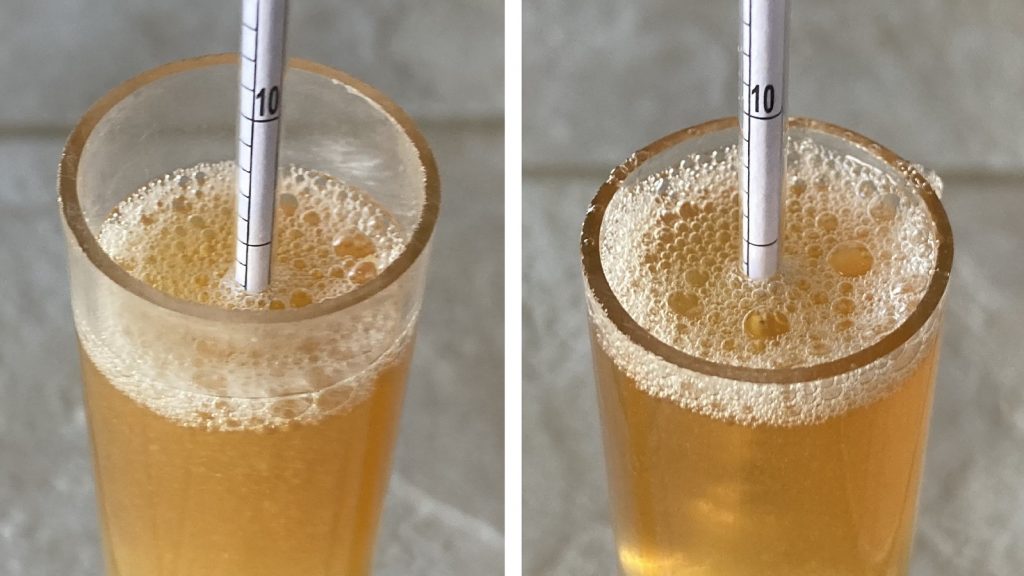
At this point, I used my glycol chiller to cold crash the beers to 34°F/1°C over a couple hours, after which I introduced the variable. For one batch, I rehydrated 0.5 tsp/2 g of gelatin powder in 0.25 cup/60 mL of warm water before adding it to the beer, while the other batch had the same amount of gelatin sprinkled dry onto the beer.
I left the beers alone for 4 days before pressure transferring them to CO2 purged kegs.
The filled kegs were placed in my keezer and left to condition for a week before I took an initial sample for comparison.
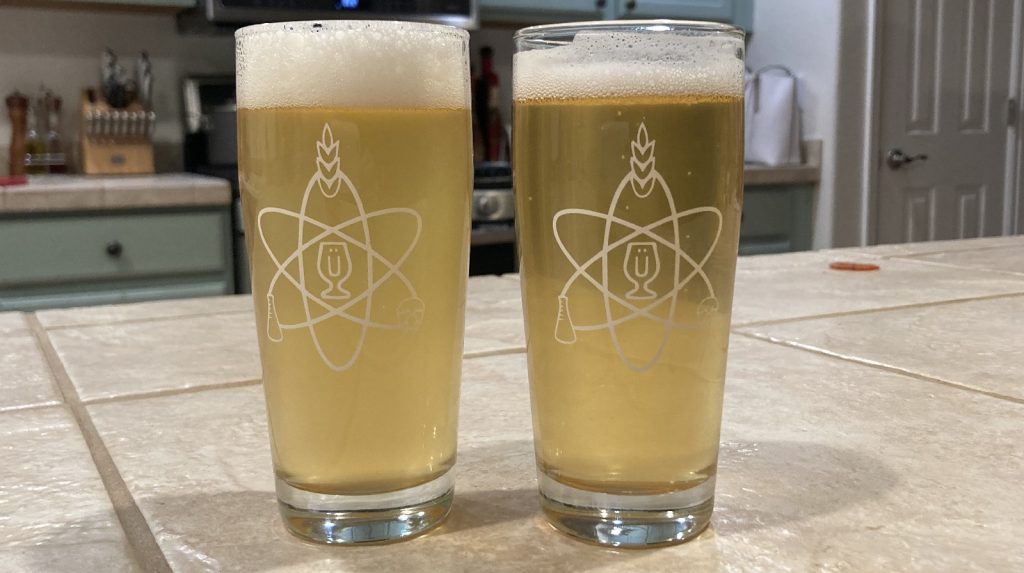
After another week, the beer fined with hydrated gelatin continued to be noticeably clearer than the one fined with dry gelatin.
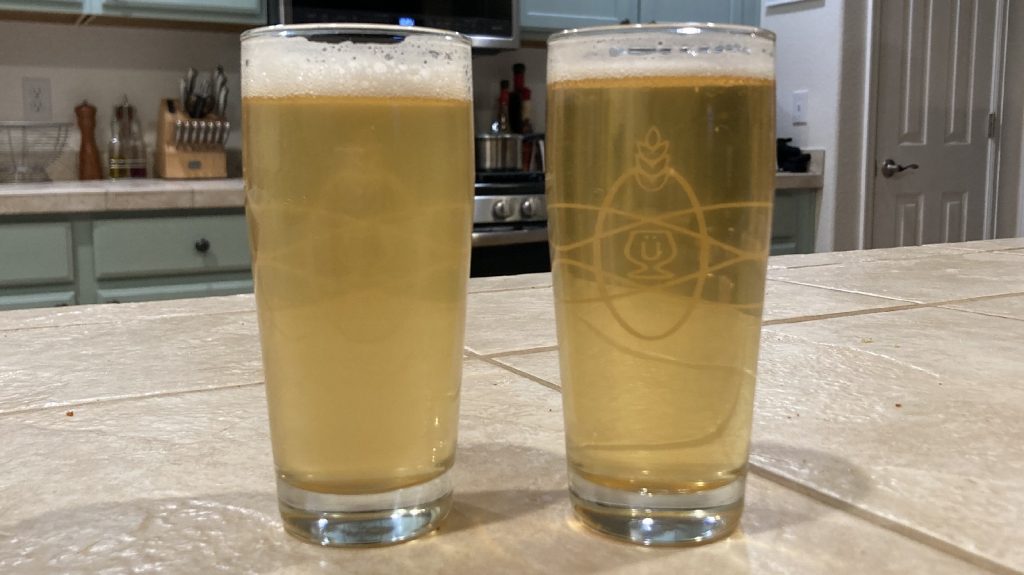
| RESULTS |
Due to social distancing practices as a result of the COVID-19 pandemic, data for this xBmt was unable to be collected in our typical manner. As such, temporary adaptations were made involving the author completing multiple semi-blind triangle tests in as unbiased a way as possible.
Utilizing 4 opaque cups of the same color where 2 were inconspicuously marked, one set was filled with the beer fined with dry gelatin while the other set was filled with the beer fined with hydrated gelatin. For each triangle test, 3 of the 4 cups were indiscriminately selected, thus randomizing which beer was the unique sample for each trial. Following each attempt, I noted whether I was correct in identifying the unique sample. Out of the 10 semi-blind triangle tests I completed, I needed to identify the unique sample at least 7 times (p<0.05) in order to reach statistical significance. In the end, I correctly identified the unique sample just 5 times (p=0.21), indicating my inability to reliably distinguish a pale lager fined with dry gelatin from one fined with hydrated gelatin.
Being my first time brewing with Root Shoot Light Munich, I was a bit more excited for this batch than most, and the resulting beer did not disappoint! Both had identical toasty bread flavors that was more intense than I expected based on the color, and I also noticed a background hint of peanut butter. I will certainly be using this malt as a base for anything darker than a Helles going forward.
| DISCUSSION |
While all beer will eventually drop bright over time, sometimes brewers prefer a little assistance to hasten the process, and one way to do this involves adding gelatin to the fermented beer. When fining with gelatin, it’s recommended that it first be hydrated in warm water, as adding dry gelatin directly to beer is said to render it less effective. My inability to reliably tell apart a pale lager fined with dry gelatin from one fined with hydrated suggests both methods have a similar perceptible impact.
Given the number of non-significant gelatin xBmts we’ve completed, my inability to perceive a difference between these beers isn’t surprising, in fact I’m fairly well convinced fining has minimal if any impact on beer character. What was interesting is the easily observable difference in clarity between the beers, which similar to a prior xBmt on this same topic, supports that idea that hydration of gelatin does make it more effective.
I really enjoy my beer is clear and often fine with gelatin, or as some of us refer to it, powdered time. My process over the years has always involved hydrating the gelatin in warm water before adding to the beer, which takes maybe 3 minutes, though I’ve often wondered about the necessity of this step, as it seems the gelatin would easily hydrate over time when added to beer. Seeing as this is the second xBmt showing that fining with dry gelatin leads less clear beer, I have no plans to change my approach and will continue spending the extra few minutes hydrating it first.
If you have any thoughts about this xBmt, please do not hesitate to share in the comments section below!
Support Brülosophy In Style!
All designs are available in various colors and sizes on Amazon!
Follow Brülosophy on:
FACEBOOK | TWITTER | INSTAGRAM
If you enjoy this stuff and feel compelled to support Brulosophy.com, please check out the Support page for details on how you can very easily do so. Thanks!



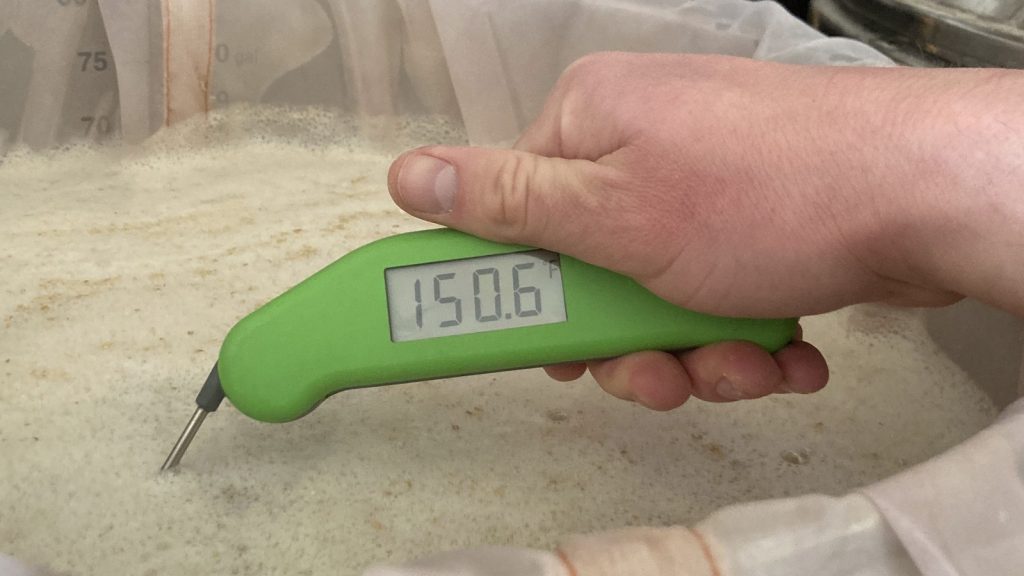
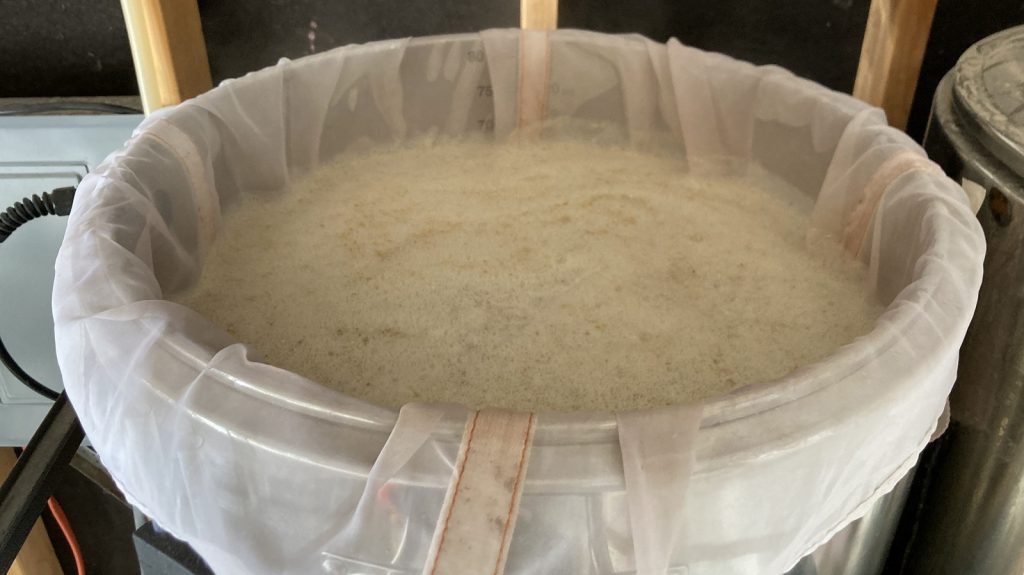
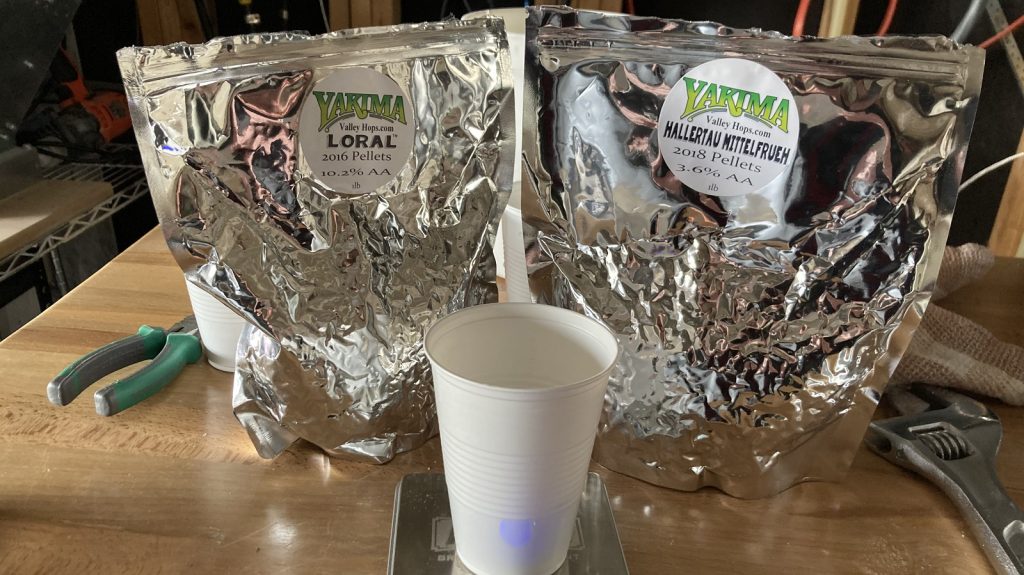
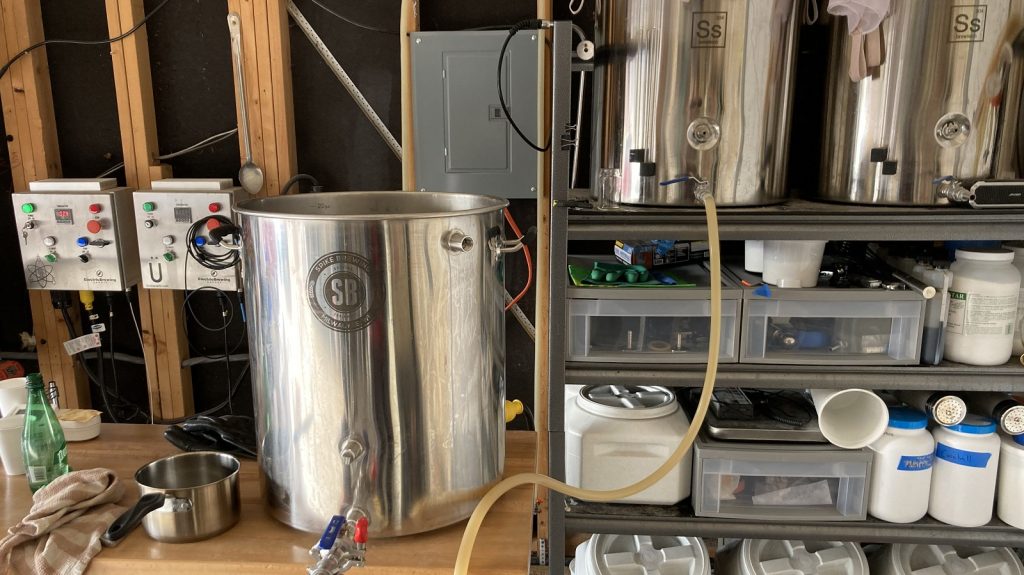
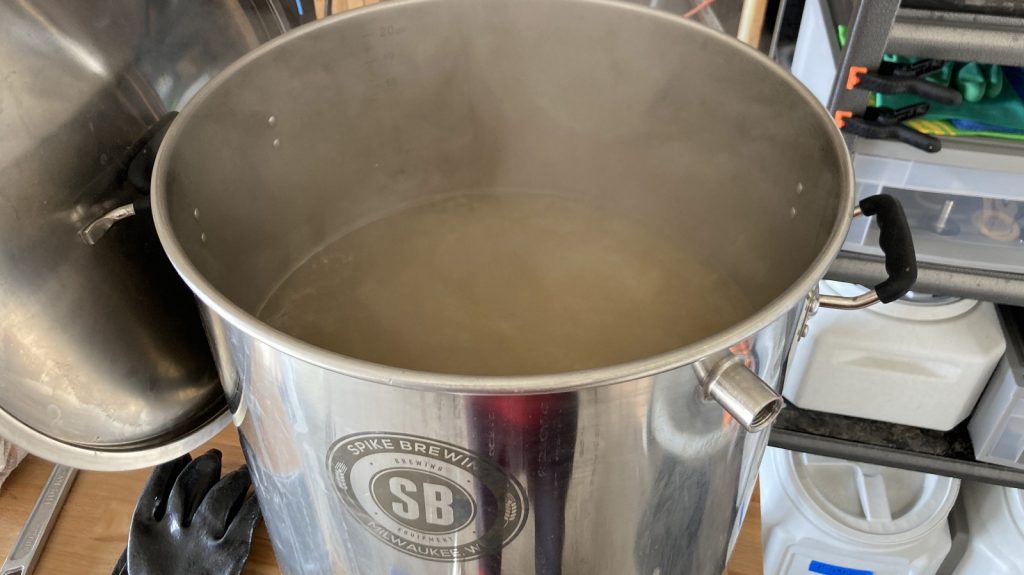
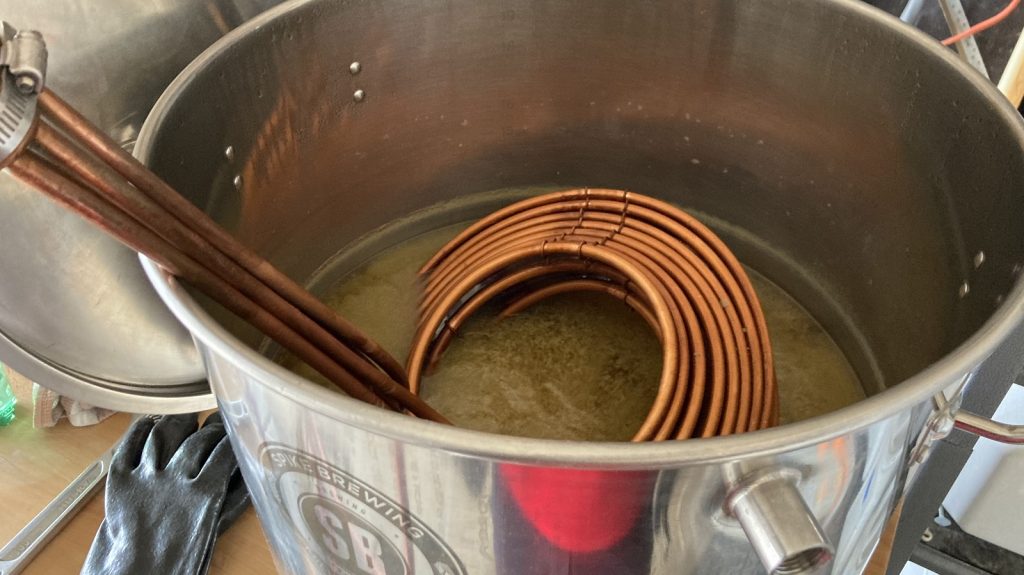
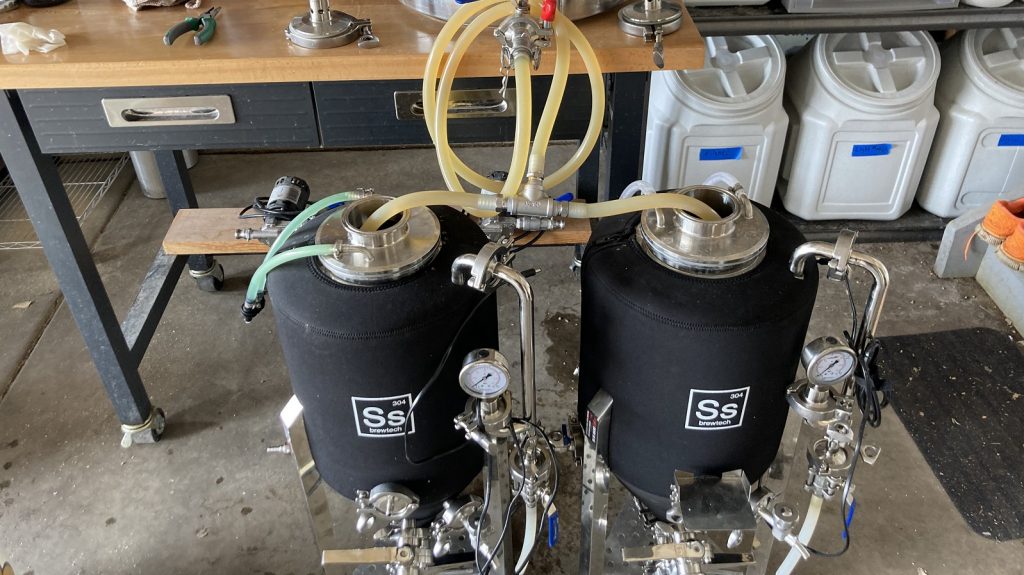
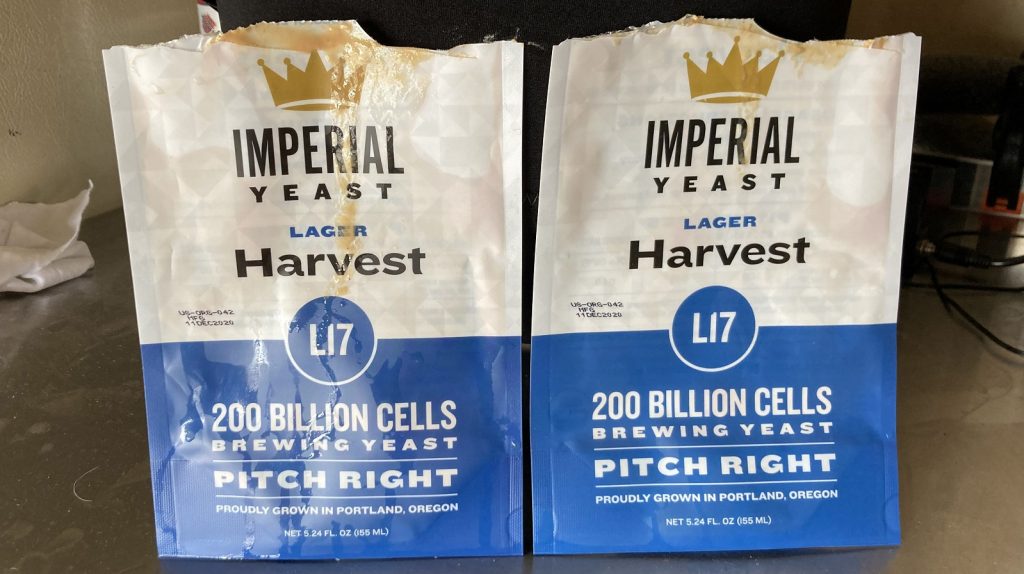













12 thoughts on “exBEERiment | The Gelatin Effect: Dry vs. Hydrated In A Pale Lager”
And the clear winner is “clear” beer!
I always fine with gelatin, with great results. Beer that is so clear you can read a newspaper through it. This normally takes anywhere from 3 to 4 days to completely clear out.
I have chose to use a slightly more expensive brand, as the no-name brand has a slight off-odor.
No matter the beer style…Porter, Barley Wine, Pale Ale, Light Lager, I use gelatin. Cloudy beer does not pass my eye test!
Why do you use gelatin in a porter? Porter’s need more body and gelatin removes the protein that provides the majority of the body doesn’t it?
I enjoy drinking and looking at a clear lager beer and seeing the bubbles! To me the cloudy beer has yeasty taste but maybe that’s my perception of what I except to taste. Nice write up and experiment.
I always fine my beer with gelatin and I use the hydrate method. We first eat and drink with or eyes. The only style I don’t clear is my Hefe Weizen.
Prost
i use sheet gelatin (hydrate). slightly higher bloom value than knox. always get crystal clear beer faster.
Nice confirmation. You did not specify how long you let the gelatin rest in the warm water. I have found there is a sweet spot of between 5 and 7 minutes. After that, the gelatin seems to fall to the bottom of the pot making a slime that probably does not go into the beer. If you hit it just right, you will see the gelatin sort of expand (“bloom”) on the surface of the water. Then I heat it up to 150f and toss into the cold fermenter.
Hey, on a completely different semi-related subject: I look forward to you guys opening the Xbmt up to a room full of fully vaccinated tasters. That would be a cool thing, ya know.
Interesting tidbit from Wikipedia, regarding where the term ‘bloom’, with respect to gelatin, comes from:
Bloom is a test to measure the strength of a gel or gelatin. The test was originally developed and patented in 1925 by Oscar T. Bloom.[1]
Anyone else think a 1.017 FG is insanely high?
I took the measurements for the picture cold and after the beer was carbonated. I don’t really care what the value, just that they are the same.
Does anyone have any thoughts about the best way to get the gelatin and water into the beer? I hate the idea of opening up my fermenter to add the gelatin(and exposing the beer to oxygen). I’ve been adding it directly to the serving keg, by injecting it through the gas post using an air purged and CO2 pressurised plastic bottle. However, it’s a hassle. Maybe unnecessary?
Nice test Jake. Conclusion is to hydrate gelatin before adding it to the keg, which will lead to a clearer beer although the taste is no different.
I think its time the excellent Brulosophy team move towards evaluating fining agents based upon the clarity of the finished beer. Clarity seems to have no effect on taste when the beer is served in opaque cups. This has been shown in repeated testing.
I don’t care that they tasted the same. I can reliably distinguish the better looking beer 10/10 times. Especially in these crazy hazy times.